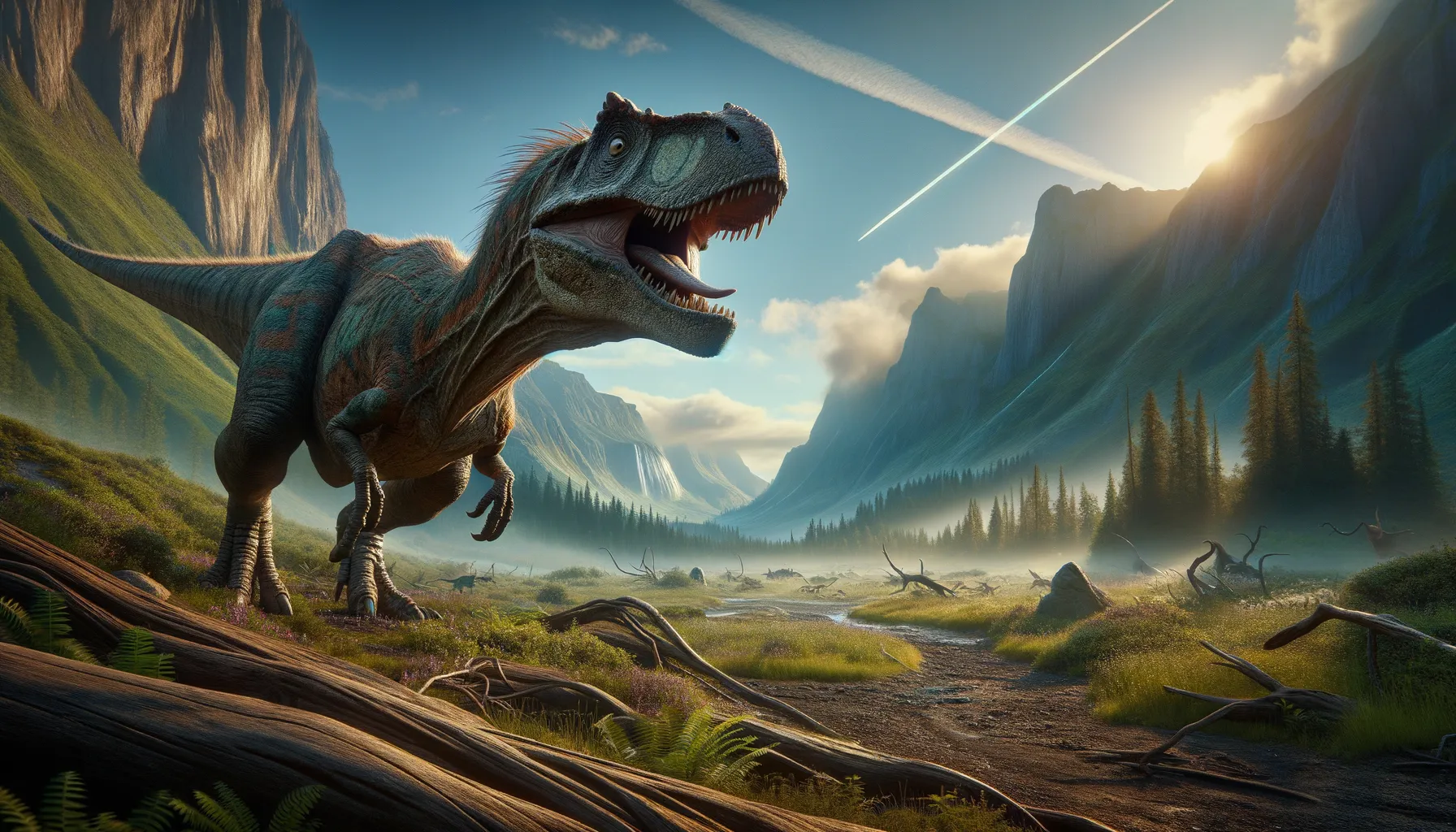
Dromaeosaurus
Small but fierce, a Cretaceous predator!
Period
Cretaceous
Length
Measured about 2 meters in length.
Height
Stood around 0.9 meters tall.
Weight
Approximately 15 kilograms.
Dromaeosaurus was a small, carnivorous dinosaur that lived during the Cretaceous period. Its agility and speed made it an effective predator. With sharp teeth and a sickle-shaped claw, it was adapted for hunting smaller prey. Despite its small size, Dromaeosaurus was a formidable hunter. Its remains have been discovered in North America, providing valuable insights into the ecosystem of its time.
Diet
Dromaeosaurus was a carnivore. Its diet likely consisted of small animals, including mammals and other dinosaurs. Sharp teeth and strong claws helped it catch and devour its prey efficiently.
Hunting
Dromaeosaurus likely used its speed and stealth to approach prey. It may have hunted solo or in small groups to tackle larger animals. Its sickle-shaped claw was crucial for grappling and finishing off its catch.
Environmental challenges
During the Cretaceous period, Dromaeosaurus faced challenges such as volcanic eruptions and shifting climates. Predation competition with larger predators also posed threats. Despite these challenges, its adaptability aided in survival during environmental changes.
Speed
Dromaeosaurus was likely a fast mover with agility.
Lifespan
Estimated to live around 10 to 20 years.
First discovery
Discovered in 1914 by Barnum Brown.
Fun Facts
- Dromaeosaurus lived about 75 million years ago during the Late Cretaceous period.
- It was a small but fierce dinosaur, roughly the size of a wolf, with a length of about 2 meters (around 6.5 feet).
- Dromaeosaurus had sharp, retractable claws on its feet, which it likely used for hunting and capturing prey.
- This dinosaur's name means 'running lizard', which reflects its agility and presumed speed.
- Dromaeosaurus belonged to a group of dinosaurs known as dromaeosaurids, which also includes the famous Velociraptor.
- It is believed to have been covered in feathers, similar to modern birds.
- Dromaeosaurus had a strong bite, among the strongest for its size, and its teeth were well-suited for slicing through flesh.
Growth and Development
Dromaeosaurus hatchlings grew rapidly to avoid predation. Juveniles likely matched adults quickly in agility and hunting skills. Growth rates might have varied with environmental conditions and food availability.
Habitat
Dromaeosaurus lived in lush environments with plenty of vegetation. It navigated through forests and open plains in search of prey. Fossil evidence suggests it preferred areas with abundant resources.
Interaction with other species
Dromaeosaurus competed with other carnivores for food. It benefited from hunting smaller, less competitive prey species. Some interaction with similar-sized predator species through competition or scavenging might have occurred.
Natural lifespan
In the wild, Dromaeosaurus might have lived up to 20 years.
Reproduction
Dromaeosaurus likely laid eggs in nests. Parental care may have been provided by one or both parents, similar to modern birds. Egg clutches were probably small to ensure higher survival rates of offspring.
Social behaviour
Dromaeosaurus might have exhibited some social behavior, especially if they hunted in packs. Communication through vocalizations and body language could have played roles in coordination. However, solitary hunting was also plausible for smaller prey capture.
Fossil locations
Dromaeosaurus fossils have been predominantly found in Alberta, Canada. Some remains also emerge from Montana, USA. These locations highlight the widespread range of Dromaeosaurus in North America during the Late Cretaceous era.
